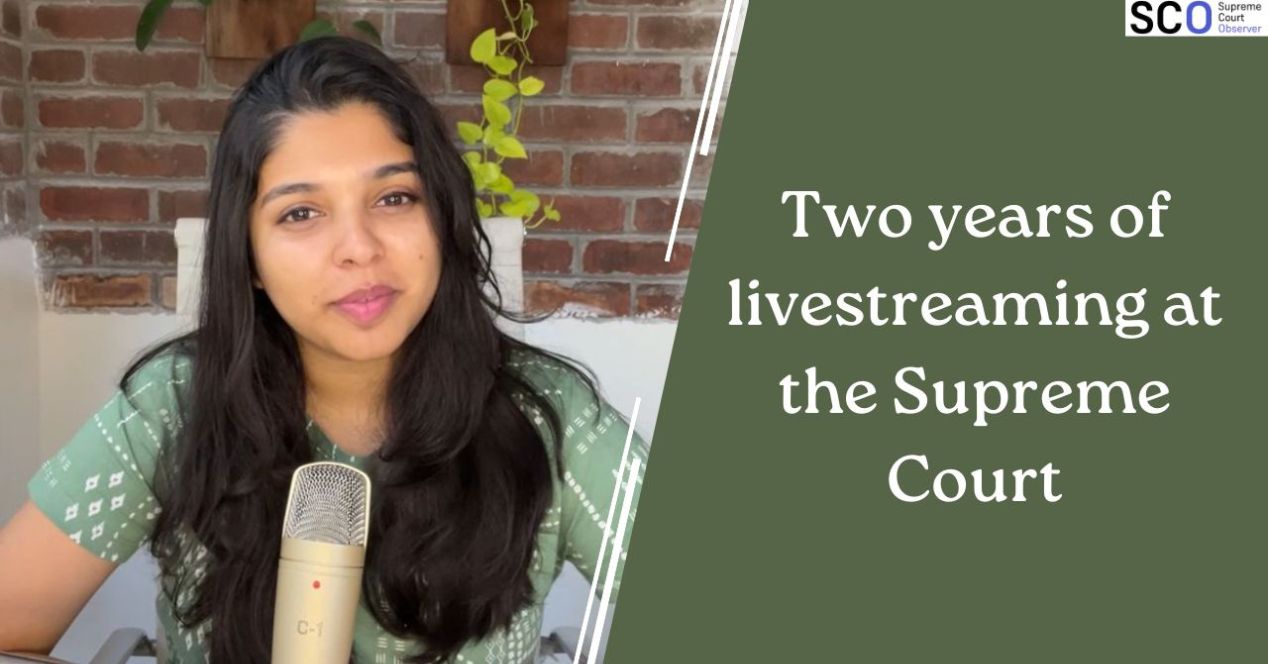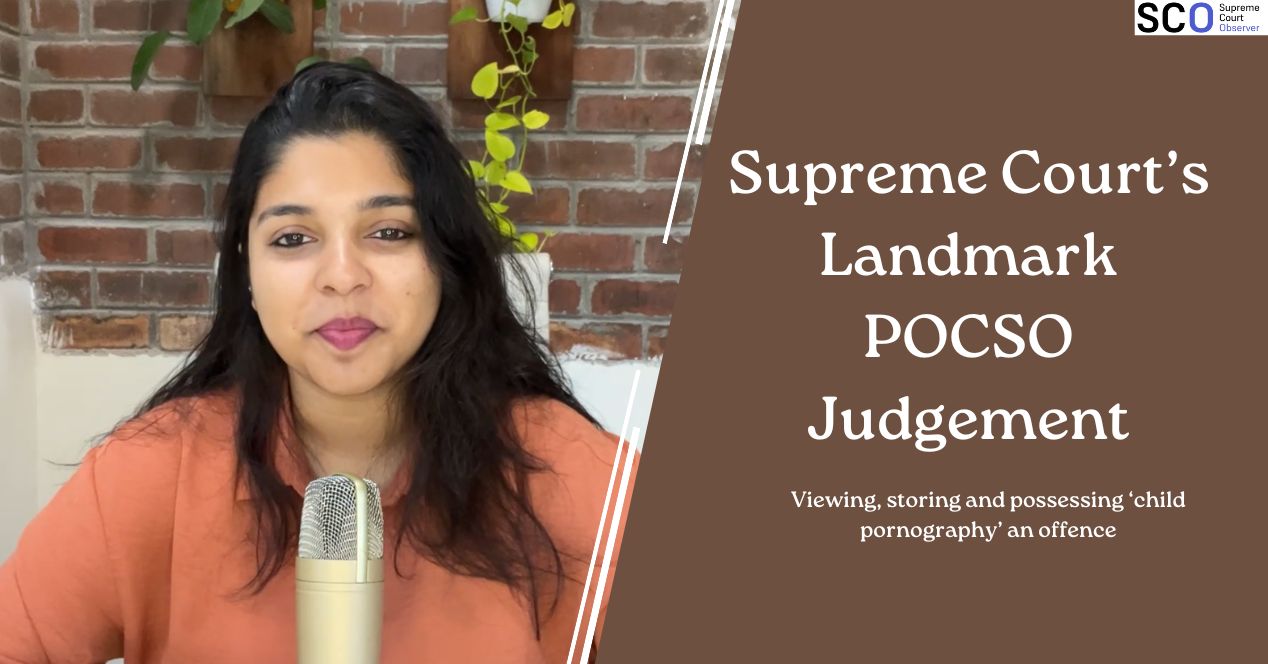Channel
Aligarh Muslim University judgement: Explained
We explain the 7-judge bench decision which laid down parameters determining the minority status of an institution.
Transcript:
Hello everyone! Welcome to SCO Explains.
I am Advay Vora, and today I will talk about last week’s decision on the minority institution status of Aligarh Muslim University.
A seven-judge bench of the Supreme Court, in a 4:3 majority, overruled Azeez Basha v Union of India.
In Azeez Basha, a five-judge bench had held that Aligarh Muslim University was not a minority institution as it was neither “established nor administered” by the Muslim community.
It had held that an institution must be both “established” and “administered” to qualify as a minority institution under Article 30 of the Constitution, which provides that religious and linguistic minorities have the right to establish and administer educational institutions of their choice.
Azeez Basha interpreted these two words conjunctively, that is, both of these should be fulfilled.
In the majority opinion written by Chief Justice DY Chandrachud, he held that Azeez Basha was incorrect when it held that an institution cannot have a minority character when it is derived from a legal statute.
The majority also laid down express parameters to test whether an institution, including a university, could be recognized as a minority institution.
The dissenting opinions by Justices Surya Kant, Dipankar Datta, and Satish Chandra Sharma endorsed the interpretation in Azeez Basha.
The bench did not reach a conclusion on the minority status of AMU itself, directing that a regular smaller bench will apply the criteria laid out by the seven-judge bench to determine its status.
CJI Chandrachud first examined whether the two-judge bench in Anjuman-e-Rahmaniya v Director Inspector of School had the authority to refer the minority status to a seven-judge bench in 1981 despite Azeez Basha being decided by a five-judge bench.
The Union had argued that this referral was invalid as the two-judge bench was bound by the prior ruling in Azeez Basha. A reference to a larger Constitution Bench can only be made by a smaller bench when it consists of the Chief Justice or the reference can be made by a bench of the same strength.
In this instance, the argument was that only a five-judge bench could make the reference to a seven-judge bench.
CJI Chandrachud cited Central Board of Dawoodi Bohra Community v State of Maharashtra, which allows smaller benches to “doubt” but not “disagree” with decisions of larger benches, thus permitting them to request the Chief Justice for referral to a larger bench.
He concluded that Anjuman-e-Rahmaniya had not disagreed with Azeez Basha but only doubted it. Thus, the seven-judge bench reference was valid.
Justice Surya Kant disagreed, noting that there is minimal difference between doubting and disagreeing.
He held that Anjuman-e-Rahmaniya lacked the authority to refer the matter directly, thereby undermining the Chief Justice’s role as the master of the roster.
Justice Sharma also agreed with the view on the illegality of the reference order.
However, Justice Kant affirmed a second reference order issued in 2019 by a three-judge bench led by former Chief Justice Ranjan Gogoi.
Justice Datta also expressed concerns about allowing a smaller bench to escalate cases without sufficient authority, warning that such a precedent would lead to, for example, a two-judge bench questioning the basic structure doctrine by referring it to a 15-judge bench.
Speaking for the majority, CJI Chandrachud referred to TMA Pai v State of Karnataka, where the right of every citizen to establish and administer institutions was traced to Article 19(1)(g), which grants freedom to engage in any occupation, trade, or business.
He observed that regulating a minority institution is similarly permissible under Article 19(6) but added that regulation must not infringe on the minority character of the educational institution.
Any restriction infringing on the minority character, he noted, would violate Article 30. Following this observation, he outlined the indicia for a minority institution.
First, he explained that the terms “incorporation” and “establishment” cannot be used interchangeably. Incorporation signifies legal existence, whereas establishment signifies the founding or the genesis of the institution.
Notably, the preamble of the Aligarh Muslim University Act states that it was passed to “establish and incorporate” AMU.
On this aspect, this is what the Chief said:
“It cannot be argued that a university was established by Parliament merely because the long title and preamble of the statute incorporating the university states that it is an act to establish and incorporate.”
He then laid down three tests to determine minority status.
The first test is to trace the genesis of the institution. This involves identifying the origin of the idea of the establishment and other preliminary sources indicating a minority community member’s involvement in the institution’s ideation.
The second test is to determine the purpose of establishing the institution.
Lastly, the third test was to examine the steps taken to implement the establishment, such as who provided the funds, the land, etc.
On the aspect of administration, he explained, it is not “necessary to prove that administration vests with the minority to prove that it is a minority educational institution.”
Administration, he says, follows the establishment and is therefore a consequence, not a precondition.
Therefore, the test is whether the administration affirms the minority character of the institution.
Even for institutions established before the Constitution, the Court must determine if the institution was established to further the interest of the minority community.
After narrowing down the indicia, the Chief held that Azeez Basha erred in concluding that an educational institution is not established by a minority if it derives its legal character from a statute.
Justice Kant, who was in the dissent, also agreed that Azeez Basha incorrectly determined that a university loses its minority status if its degree is recognized by the government.
He stated that a university’s minority character should not be denied merely because it was created through legislative means.
However, he suggested that the ratio in Azeez Basha can be modified instead of the judgment being overruled.
Justice Datta held that the indicia laid down by the majority should apply prospectively, not retrospectively.
This would mean that institutions established before the AMU judgment should not be assessed based on the indicia provided in the CJI’s majority view.
According to him, there was already an implied indicia for determining minority institutions in the past, which the Court is now replacing with an express indicia.
Notably, he stated that AMU was not a minority institution, though CJI Chandrachud and Justice Kant’s opinion did not address this point, leaving it to be decided by a smaller bench.
Thank you for watching.
Keep watching SCO’s channel for more explainers on judgments that came out in Chief Justice Chandrachud’s final week.
We’ll see you soon!




